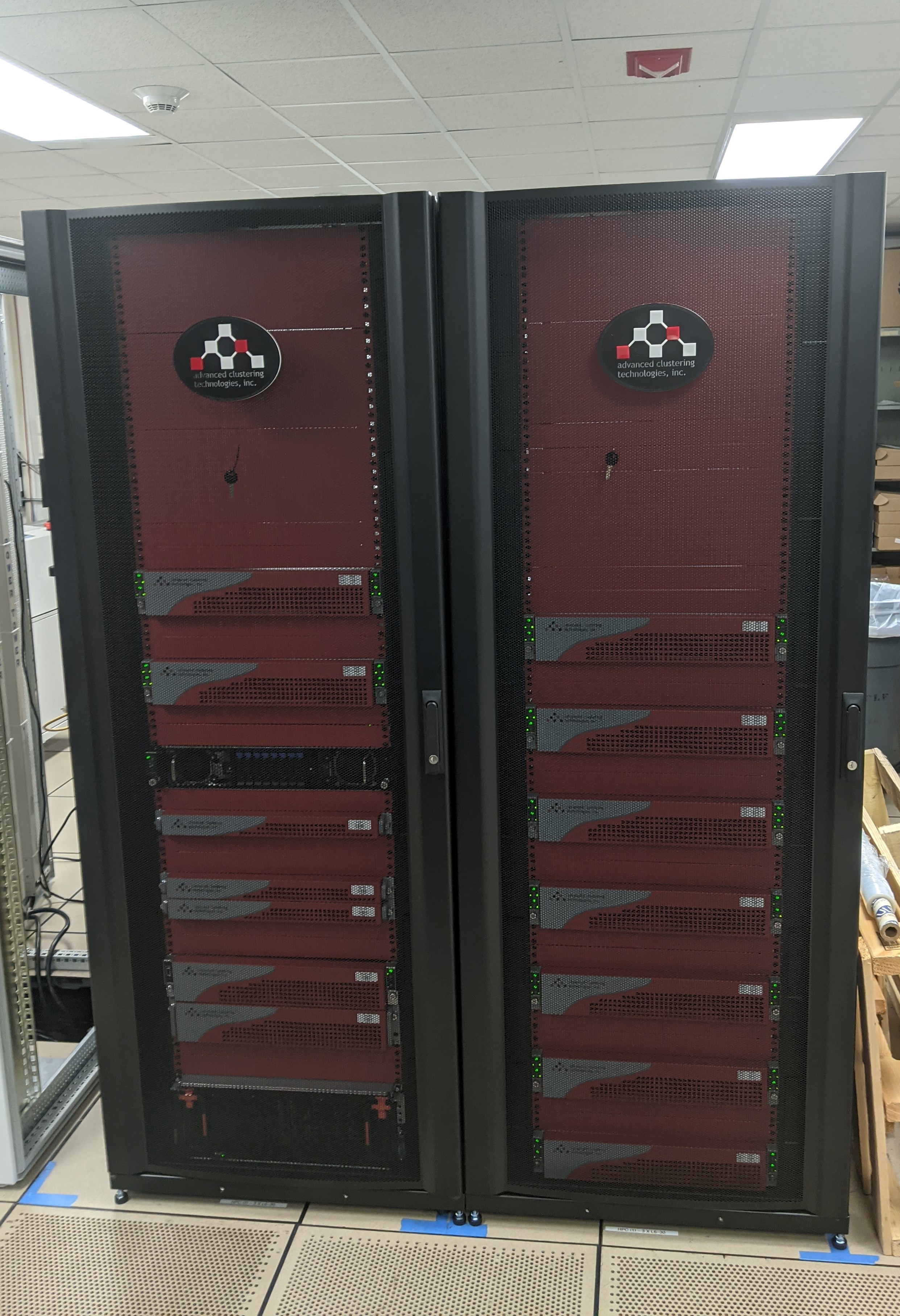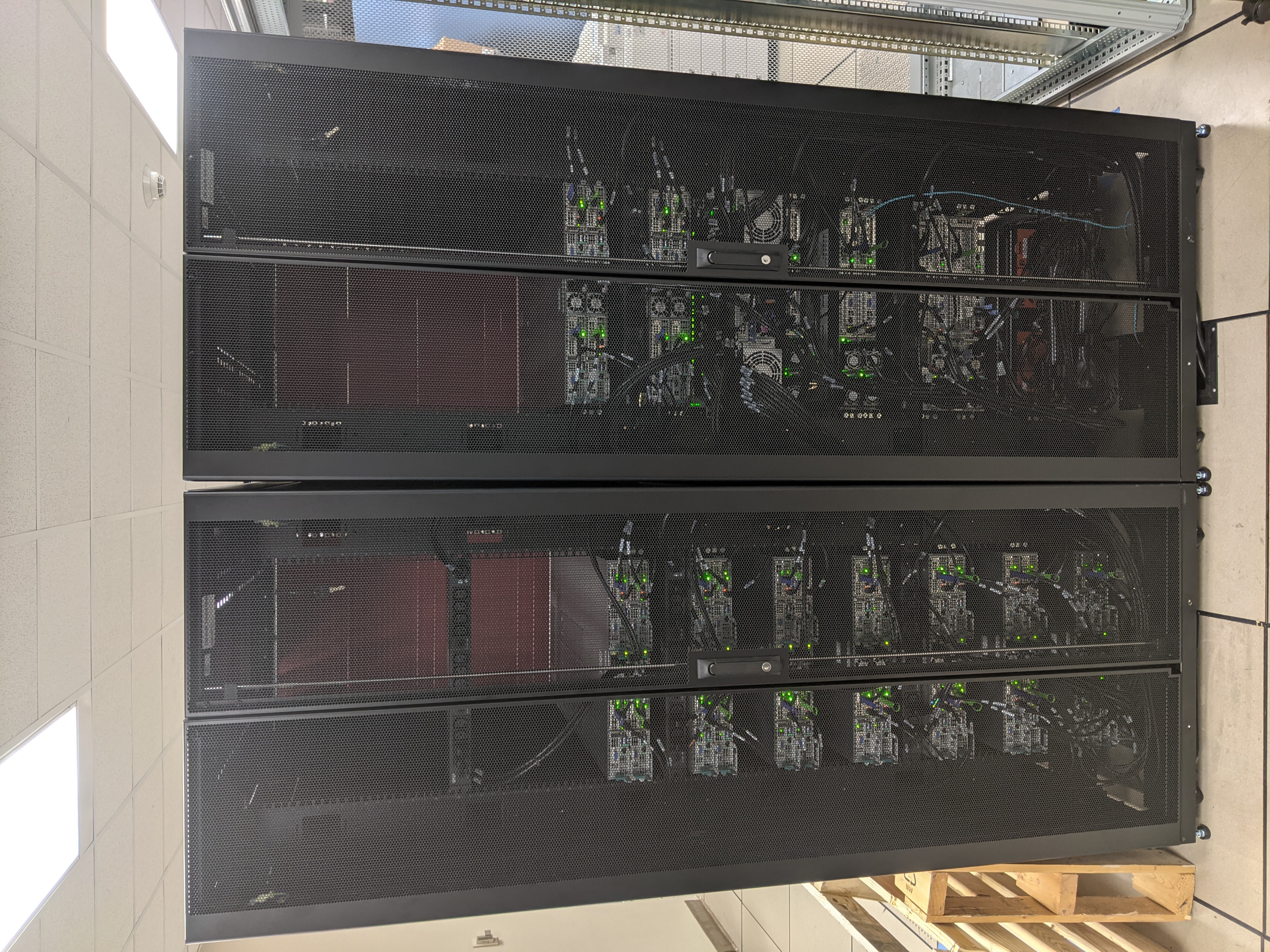Tigerfish High Performance Computing Cluster
Christopher Taylor, PhD, Associate Professor of Microbiology, Immunology & Parasitology, LSUHSC-NO and Director of Bioinformatics, Biostatistics and Computational Biology Core for the LBRN
LSU Health New Orleans has acquired a high-performance computing cluster to facilitate access to research computing for our campus. This resource is funded through a National Science Foundation - Office of Advanced Cyberinfrastructure Grant (Award #2018936) entitled “CC* Compute: Compute Cluster for Computational Sciences at Louisiana State University Health Sciences Center - New Orleans (LSUHSC-NO).” The Co-PIs on the grant are Christopher M. Taylor (School of Medicine - Microbiology, Immunology & Parasitology), Kenneth J. Boe (Asst. Vice Chancellor for Information Technology), Carmen C. Canavier (School of Medicine - Cell Biology & Anatomy), Andrew Chapple (School of Public Health - Biostatistics), and Chindo Hicks (School of Medicine - Genetics).
The computer clust er, named Tigerfish, has the potential to enable transformative research at the Health
Sciences Center by supporting large computational tasks that cannot be completed on
individual workstations. To date, the Tigerfish cluster is being used to support research
in computational neuroscience, machine learning, and shotgun metagenomics. The system
is housed in the Resource Center Building and is now available as a resource to all
campus researchers who wish to utilize it for running computational workflows. It
is also available to support educational programs and has been joined into the Open
Science Grid to help support access to high-performance computing nationwide.
er, named Tigerfish, has the potential to enable transformative research at the Health
Sciences Center by supporting large computational tasks that cannot be completed on
individual workstations. To date, the Tigerfish cluster is being used to support research
in computational neuroscience, machine learning, and shotgun metagenomics. The system
is housed in the Resource Center Building and is now available as a resource to all
campus researchers who wish to utilize it for running computational workflows. It
is also available to support educational programs and has been joined into the Open
Science Grid to help support access to high-performance computing nationwide.
There is no cost to researchers to access the cluster as it is supported by the NSF grant referenced above, but you will need to have or employ the expertise to work with the Linux operating system and generate SLURM workflows to submit your jobs to run. An undergraduate student worker with a computing background has been hired under the NSF grant funding to facilitate utilization of the cluster and help researchers generate computational workflows. Hailey Dusablon can be contacted at hdusab@lsuhsc.edu for assistance with Tigerfish.
Tigerfish runs the Linux CentOS operating system and has a total of 1440 compute cores providing over 193 teraFLOPS of computing power. The current cluster configuration has 36 computing nodes each with 40 compute cores and 192 GB of RAM. There is also a large memory node with access to 1500 GB of RAM and a GPU node with access to 192 GB of RAM. Secondary storage for the cluster consists of 576 TB of usable storage in a BeeGFS file system along with a 45.6 TB SSD Layer to accelerate performance. The system was built by Advanced Clustering Technologies and is expandable to accommodate future upgrades if the need arises and funding is available.
If you have an application that would benefit from access to this computing cluster, please visit our Tigerfish High-Performance Computing web portal to find out more and request an account:

